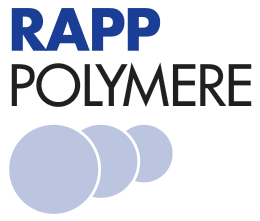€ 182,00*
1310000-00-20.500MG
Product information
The amine functional group at one end of the PEG linker molecule allows for selective and covalent attachment to other molecules with complementary functional groups, such as carboxylic acids or activated esters, aldehydes and epoxides. The newly formed bonds are amides, imines or secondary amines. Applicable for reversible or permanent crosslinking with PEG. The hydroxy group on one side of this PEG crosslinker is able to undergo esterification reactions with acids for reversible pegylation. It also enables further derivatization or replacement with other reactive functional groups.
Literature
L 105 α-Hydroxy-ω-Amino PEGs
- Sun, Z.; Xie, H.; Tang, S.; Yu, X.-F.; Guo, Z.; Shao, J.; Zhang, H.; Huang, H.; Wang, H.; Chu, P. K. Ultrasmall Black Phosphorus Quantum Dots: Synthesis and Use as Photothermal Agents. Angew. Chem. Int. Ed Engl. 2015, 54 (39), 11526-11530. doi: 10.1002/anie.201506154
- Choi, C. H. J.; Alabi, C. A.; Webster, P.; Davis, M. E. Mechanism of Active Targeting in Solid Tumors with Transferrin-Containing Gold Nanoparticles. Proc. Natl. Acad. Sci. U. S. A. 2010, 107 (3), 1235-1240. doi: 10.1073/pnas.0914140107
- Prabaharan, M.; Grailer, J. J.; Pilla, S.; Steeber, D. A.; Gong, S. Amphiphilic Multi-Arm-Block Copolymer Conjugated with Doxorubicin via PH-Sensitive Hydrazone Bond for Tumor-Targeted Drug Delivery. Biomaterials 2009, 30 (29), 5757-5766. doi: 10.1016/j.biomaterials.2009.07.020
- Ryman-Rasmussen, J. P.; Riviere, J. E.; Monteiro-Riviere, N. A. Penetration of Intact Skin by Quantum Dots with Diverse Physicochemical Properties. Toxicol. Sci. 2006, 91 (1), 159-165. doi: 10.1093/toxsci/kfj122
- Johnson, J. A.; Lu, Y. Y.; Burts, A. O.; Lim, Y.-H.; Finn, M. G.; Koberstein, J. T.; Turro, N. J.; Tirrell, D. A.; Grubbs, R. H. Core-Clickable PEG-Branch-Azide Bivalent-Bottle-Brush Polymers by ROMP: Grafting-through and Clicking-To. J. Am. Chem. Soc. 2011, 133 (3), 559-566. doi: 10.1021/ja108441d
- Xiao, Z.; Ji, C.; Shi, J.; Pridgen, E. M.; Frieder, J.; Wu, J.; Farokhzad, O. C. DNA Self-Assembly of Targeted near-Infrared-Responsive Gold Nanoparticles for Cancer Thermo-Chemotherapy. Angew. Chem. Int. Ed Engl. 2012, 51 (47), 11853-11857. doi: 10.1002/anie.201204018
- Sun, X.; Rossin, R.; Turner, J. L.; Becker, M. L.; Joralemon, M. J.; Welch, M. J.; Wooley, K. L. An Assessment of the Effects of Shell Cross-Linked Nanoparticle Size, Core Composition, and Surface PEGylation on in Vivo Biodistribution. Biomacromolecules 2005, 6 (5), 2541-2554. doi: 10.1021/bm050260e
- Liu, Y.; Ai, K.; Ji, X.; Askhatova, D.; Du, R.; Lu, L.; Shi, J. Comprehensive Insights into the Multi-Antioxidative Mechanisms of Melanin Nanoparticles and Their Application to Protect Brain from Injury in Ischemic Stroke. J. Am. Chem. Soc. 2017, 139 (2), 856-862. doi: 10.1021/jacs.6b11013
- Allen, P. M.; Liu, W.; Chauhan, V. P.; Lee, J.; Ting, A. Y.; Fukumura, D.; Jain, R. K.; Bawendi, M. G. InAs(ZnCdS) Quantum Dots Optimized for Biological Imaging in the near-Infrared. J. Am. Chem. Soc. 2010, 132 (2), 470-471. doi: 10.1021/ja908250r

